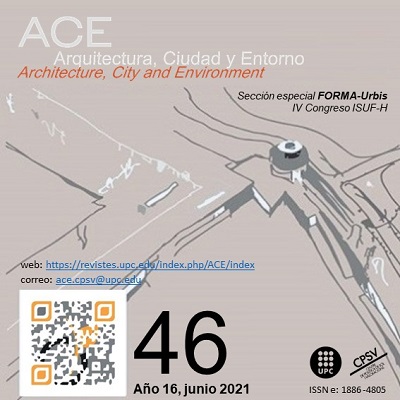Viviendas ubicadas en áreas de riesgo de incendios forestales de interfaz. Un análisis territorial y normativo desde Chile
DOI:
https://doi.org/10.5821/ace.16.46.9523Palabras clave:
Protección pasiva construcciones madera, interfaz de incendios forestales, resistencia al fuego, normas constructivasResumen
Dada la frecuencia e intensidad de los eventos climáticos, es esencial conectar los instrumentos de planificación y gestión de riesgo territorial con exigencias a construcciones ubicadas en zonas de riesgos. Si se inspeccionan preventivamente edificaciones de áreas rurales y periurbanas con bajas especificaciones técnicas de seguridad contra incendios de interfaz forestal, es posible planificar medidas preventivas con la debida antelación, bajo estándares legalmente aplicables. La experiencia internacional señala que las viviendas pueden ser más seguras, por ejemplo, estableciendo áreas de protección (30-60 metros) y actuando sobre la densidad y distanciamiento de la vegetación combustible. En este sentido, este estudio aborda la protección considerando la relación del entorno inmediato con las características de la edificación bajo amenaza. Para este propósito se revisan las regulaciones chilenas, estadounidenses, europeas y australianas con respecto a la garantía de rendimiento frente a incendios de edificios y su entorno inmediato, extrayendo estándares de calidad y recomendaciones, considerando las necesidades y regulaciones “casa hacia adentro” y “casa hacia afuera”. Medidas de seguridad específicas como resistencia al fuego de elementos estructurales y no estructurales, materialidad incombustible, no inflamabilidad, no toxicidad y opacidad de humos; aumento de masividad y cobertura con elementos incombustibles; limitaciones de uso de materiales plásticos y otros que aporten carga combustible, son aspectos de protección pasiva a ser incluidos en evaluación preventiva de edificaciones que conduzcan a recomendaciones y mejoras para disminuir la vulnerabilidad.
Publicado
Número
Sección
Licencia
COPYRIGHT
El contenido de los artículos y los comentarios en ellos expresados son responsabilidad exclusiva de sus autores, y no reflejan necesariamente la opinión del comité editor de la revista. Los trabajos publicados por ACE pueden reproducirse bajo la licencia CC-BY-NC-ND 3.0 ES más información http://creativecommons.org/licenses/by-nc-nd/3.0/es/
Lo que implica que las personas autoras sólo retienen y mantienen los derechos de Copyright dentro de las limitaciones incluidas en la licencia anterior.





































